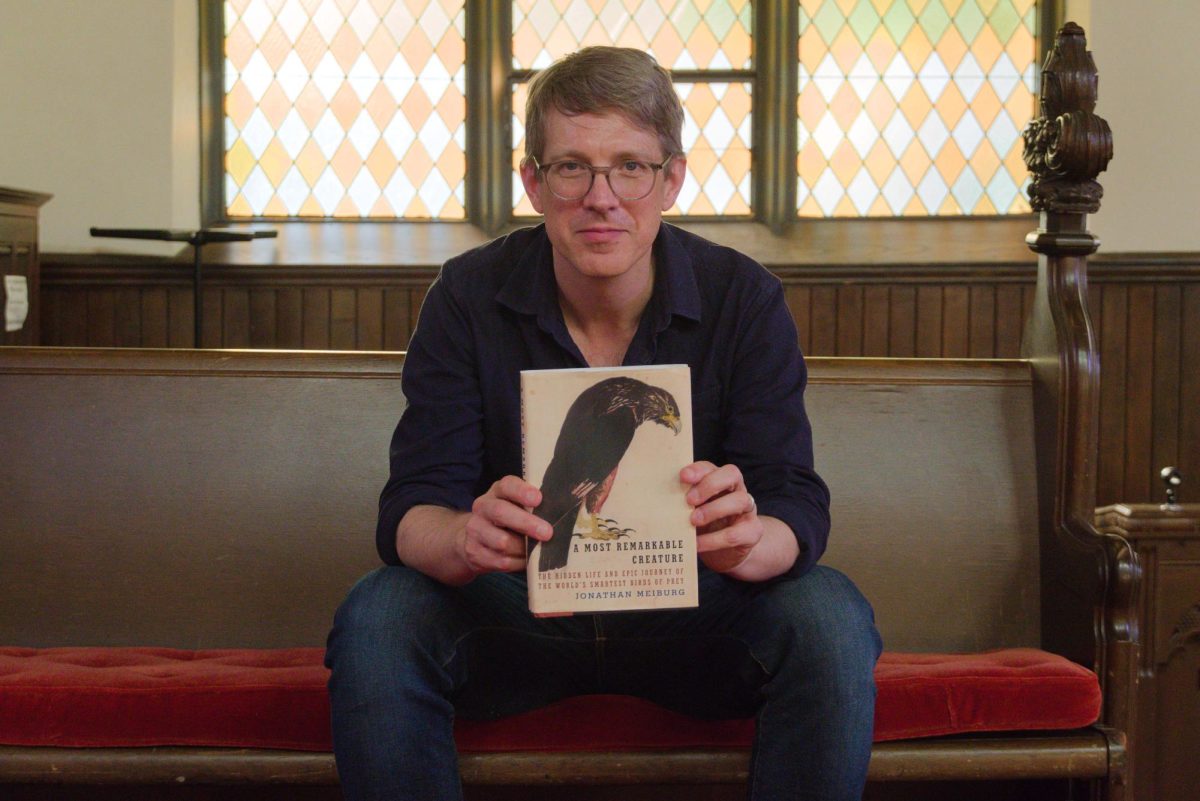Special effects aren’t the forte of the average Titular Head movie. Sure, “Racquetball Tunak Tunak Tun” has its own lightsaber duel at the end. But filmmakers often take home the title with your standard video camera, a great character or two, and an innovative concept.
“Star Wars Grinnell,” director Henry Reich’s ’09 indisputable Titular Head winner, might force filmmakers to step up their games, taking all of the creativity and inside jokes required of Titular Head classics and adding some inspired effects wizardry.
Like most movies, though, the final product disguises the story behind the process, where improvisation, secrecy and monotonous technical work proved just as important as many of the flashiest special effects scenes in making the movie such a success. Three not-so-obvious factors stand out:
1. The most time-consuming scenes to create featured many of the least noticeable special effects.
Take the movie’s eye-catching, yet relatively brief, opening scene, where Alex Reich’s ’11 X-Wing was attacked by a TIE Fighter and crash -landed on the Grinnell campus.
“For this one I had an X-Wing model downloaded from the internet and I had to render it and animate it flying downwards with particles coming out of the engine,” H. Reich said. “And that gets composited onto this layer [with the satellite]. This is a simple shot once you have the X-Wing in it, it’s just the background layer and the X-Wing.” Then Reich just had to animate the map, manipulating a still aerial image from the U.S. Geological Survey to make the X-Wing look like it’s actually crashing in Grinnell. It was a one-person job.
Meanwhile, the lightsaber duels between A. Reich ’11 and Kyle Lynch-Klarup ’10 took multiple crew members and countless hours of work to finish.
“Most of the people involved [with the movie] were just drawing lightsabers,” H. Reich said.
First, A. Reich and Lynch-Klarup filmed their fight scenes using removable PVC-pipe blades, giving the lightsaber effects team a reference point. The crew then had to rotoscope the lightsabers into the final product, tracing frame-by-frame where the lightsaber effects should go in each shot.
“The lightsabers are just square boxes [drawn around the PVC pipes] that you move around where the lightsaber should be,” crewmember Anders Ahlberg ’10 said. You’re just masking it out and telling [the computer] where it is.”
At 30 frames per second and with lightsabers appearing in more than two minutes of the movie, the biggest effects scenes finished long before the lightsaber duels, making the final editing process ultimately revolving around a critical mass of rotoscoping.
“Thursday night before Titular Head, six of us were in [the CCL] all going crazy,” H. Reich said.
But Ahlberg noted the least remarkable special effects scenes are often what make the movie work.
“With a lot of effects, the goal is to be hidden,” Ahlberg said. “The ultimate goal is for the audience to not think of it as an effect, but part of the movie.”
2. The crew never really had a cohesive overarching plan for the film nor a vision for how certain scenes would be shot.
Had “Star Wars Grinnell” turned out differently, H. Reich said we could have seen the original plans of a lightsaber duel on top of a moving train or a dramatic jump off the roof of Noyce. In fact, the initial two-and-a-half day shoot produced a film that would have ended in Quad, and didn’t include many of the movie’s key climactic scenes, which came later during a brainstorming session.
“We had this idea that we wanted to have [A. Reich and Lynch-Klarup] come onto Mac Field and we wanted the shot of Lyle after Alex killed Kyle,” H. Reich said. “So all we knew is that we needed to have that shot at the end.”
Even when they had tentative plans, they found it more productive to just film and see what happened.
“The lightsaber fight in Quad basement wasn’t originally planned,” H. Reich said. “When we got there we said we needed a couple of shots in the kitchen beforehand. Then we went downstairs just to explore and saw this basement that was this trashed place and thought OK, we need to fight here. The vast majority of it we just had them fight each other. They’d do it for 30-45 seconds and then take a break.”
3. Most of the time, actors and animators had little idea how their work would integrate into the final product.
H. Reich decided that the most efficient way to make the movie would involve keeping most of the people involved in the dark.
“You’d rather be shooting than explaining what point in the story they’re at,” H. Reich said. “People were good about trusting exactly what we were doing.”
For Lynch-Klarup, this meant accepting an invitation based on his sword fighting skills and his willingness to jump off a bridge, wear a Sith costume and follow along.
“I had no idea what I was being a Sith Lord for,” Lynch-Klarup said.
The animators faced a similarly slow and veiled process.
“You’d be seeing parts of the movie where the effects weren’t done, a scene of [Dan] Krauss [’12] riding his bike on the loggia,” Ahlberg said. “Then all of a sudden, you do something, and he gets stepped on. It’s cool to see it evolve, the shots you’re working on going from one stormtrooper to 16.”
But the most startled onlookers might have been those who knew nothing of Titular Head.
“We were shooting the scenes where I killed Kyle on a big prospie weekend,” A. Reich said. So there were 200 people walking across Mac Field and we were there with lightsabers.”


















































